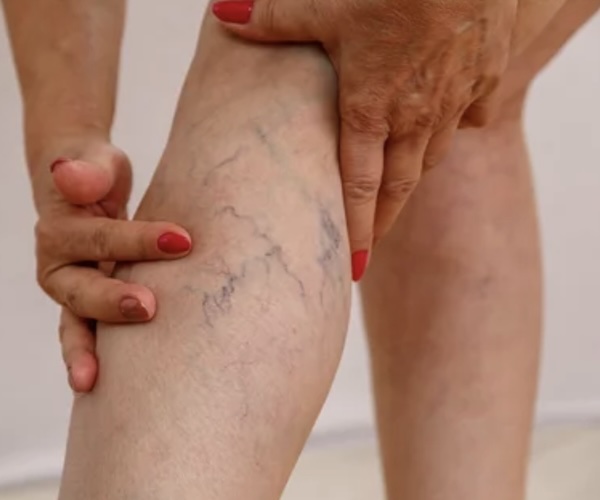
What are Varicose Veins?
Varicose veins are enlarged, twisted veins that usually appear dark blue or purple and are most commonly found on the legs. They occur when the valves inside the veins weaken or become damaged, allowing blood to flow backward and pool in the vein, causing it to stretch and swell.
While often a cosmetic concern, varicose veins can also lead to discomfort, heaviness, swelling and itching. In severe cases, they may result in skin changes or ulcers.
What causes Varicose Veins to develop?
Varicose veins develop due to increased pressure in the veins, typically from prolonged standing, sitting or underlying circulatory issues. Some of the most common contributing factors include:
- Genetics – A family history of varicose veins increases your risk.
- Age – Aging causes wear and tear on the valves in your veins.
- Pregnancy – Hormonal changes and increased blood volume can enlarge veins.
- Obesity – Excess weight adds pressure to leg veins.
- Sedentary lifestyle – Lack of movement weakens circulation.
What are the symptoms of Varicose Veins?
Common symptoms of Varicose Veins include:
- Bulging, rope-like veins visible on the surface of the skin
- Aching or heavy sensation in the legs
- Swelling around the ankles and calves
- Itchy or dry skin near the affected veins
- Night-time leg cramps or throbbing
How are Varicose Veins diagnosed?
Diagnosis is typically done through a physical examination and a duplex ultrasound scan, which helps assess blood flow and identify valve damage. A vascular specialist will check for signs of chronic venous insufficiency and rule out other conditions like deep vein thrombosis (DVT).
What are the modern treatments for Varicose Veins?
While not all types of paralysis are curable, several treatments can help improve function and quality of life:
- Medical treatments for varicose veins have advanced significantly in recent years. Popular options include:
- Endovenous Laser Therapy (EVLT) – Uses laser energy to seal the faulty vein.
- Radiofrequency Ablation (RFA) – Similar to EVLT, using heat to close the vein.
- Sclerotherapy – Involves injecting a solution into the vein to collapse it.
- Foam Therapy – A foam-based agent is used to close off larger veins.
- Surgical Ligation and Stripping – Rarely used today, but involves physically removing the vein.
What lifestyle changes can help prevent or manage Varicose Veins?
While you can’t always prevent varicose veins, certain habits can help reduce your risk or slow their progression:
- Exercise regularly to improve blood circulation.
- Elevate your legs when resting.
- Avoid prolonged standing or sitting without movement.
- Maintain a healthy weight to reduce pressure on your veins.
- Wear compression stockings if recommended by your doctor.
Is there an effective ayurvedic treatment for Varicose Veins?
Yes, Ayurveda offers natural and holistic approaches to managing varicose veins by addressing both the symptoms and root causes of the condition. In ayurvedic terms, varicose veins are linked to imbalances in Vata dosha, which governs circulation and movement.
Common ayurvedic therapies for Varicose Veins Include:
- Abhyanga (Therapeutic Oil Massage) – Improves circulation and reduces pain.
- Leech Therapy (Jalaukavacharana) – A time-tested method to reduce venous congestion and detoxify the blood.
- Basti (Medicated Enemas) – Helps balance Vata dosha and improve elimination.
- Herbal Medicines – Such as Arjuna, Gotu Kola, Punarnava and Ashwagandha to strengthen veins and support vascular health.
- Dietary recommendations – A Vata-pacifying diet that includes warm, easily digestible foods and avoids cold, dry or processed items.
Ayurveda focuses not only on physical treatments but also on mental balance and long-term wellness. It is especially suitable for individuals looking for non-invasive and natural remedies